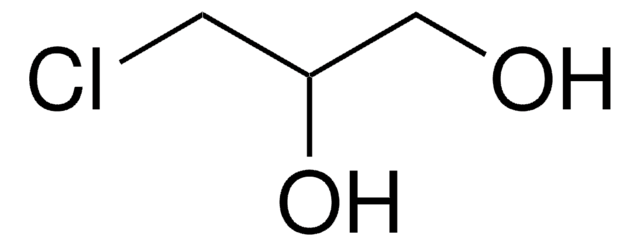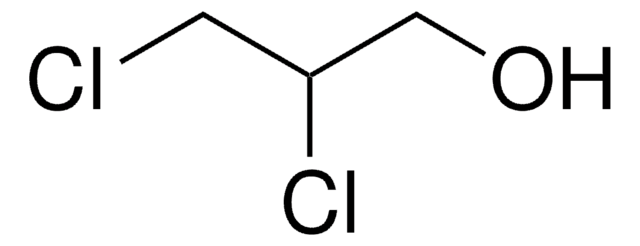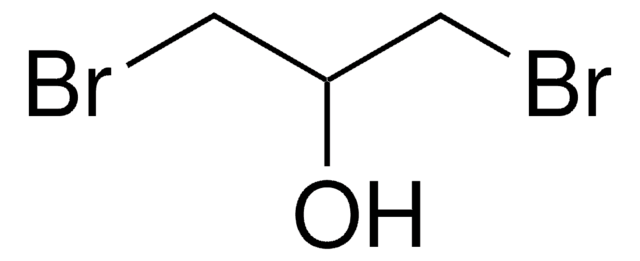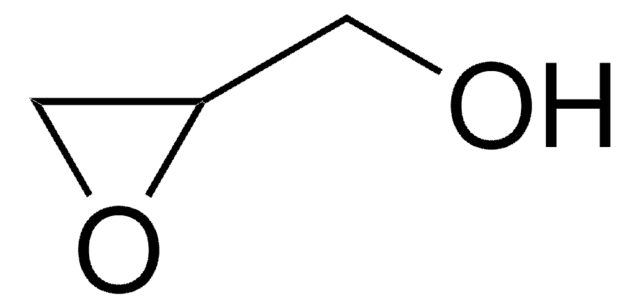184489
1,3-Dichloro-2-propanol
97%
Synonyme(s) :
Glycerol-α,γ-dichlorohydrin
About This Item
Produits recommandés
Niveau de qualité
Pureté
97%
Forme
liquid
Indice de réfraction
n20/D 1.483 (lit.)
Point d'ébullition
174.3 °C (lit.)
Pf
−4 °C (lit.)
Solubilité
water: soluble 10 part
alcohol: miscible
diethyl ether: miscible
Densité
1.363 g/mL at 20 °C
1.351 g/mL at 25 °C (lit.)
Groupe fonctionnel
chloro
Chaîne SMILES
OC(CCl)CCl
InChI
1S/C3H6Cl2O/c4-1-3(6)2-5/h3,6H,1-2H2
Clé InChI
DEWLEGDTCGBNGU-UHFFFAOYSA-N
Vous recherchez des produits similaires ? Visite Guide de comparaison des produits
Description générale
1,3-Dichloro-2-propanol is used as a pharmaceutical intermediate and solvent for paints, lacquers, and epoxy resins.
Application
- Hydroxyl-N-tosylcyclams via sodium ethoxide catalyzed cyclization reaction with di(poly)-N-tosylamides.
- (R)-Epichlorohydrin using biocatalysts.
- 1,3-dichloropropene, a soil fumigant, and synthetic glycerol.
It can also be used as an intermediate in the production of epoxy resins, as well as a solvent for hard resins and nitrocellulose.
Mention d'avertissement
Danger
Mentions de danger
Conseils de prudence
Classification des risques
Acute Tox. 3 Oral - Acute Tox. 4 Dermal - Carc. 1B
Code de la classe de stockage
6.1A - Combustible acute toxic Cat. 1 and 2 / very toxic hazardous materials
Classe de danger pour l'eau (WGK)
WGK 3
Point d'éclair (°F)
186.8 °F - closed cup
Point d'éclair (°C)
86 °C - closed cup
Équipement de protection individuelle
Eyeshields, Faceshields, Gloves, type ABEK (EN14387) respirator filter
Faites votre choix parmi les versions les plus récentes :
Déjà en possession de ce produit ?
Retrouvez la documentation relative aux produits que vous avez récemment achetés dans la Bibliothèque de documents.
Les clients ont également consulté
Notre équipe de scientifiques dispose d'une expérience dans tous les secteurs de la recherche, notamment en sciences de la vie, science des matériaux, synthèse chimique, chromatographie, analyse et dans de nombreux autres domaines..
Contacter notre Service technique








